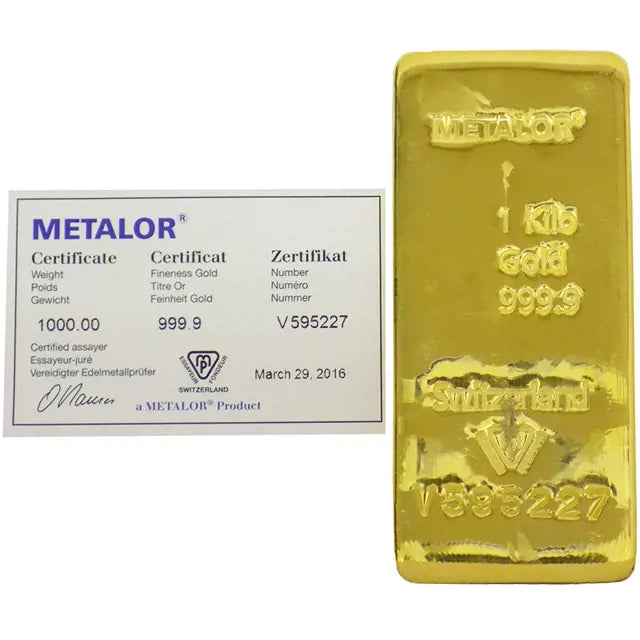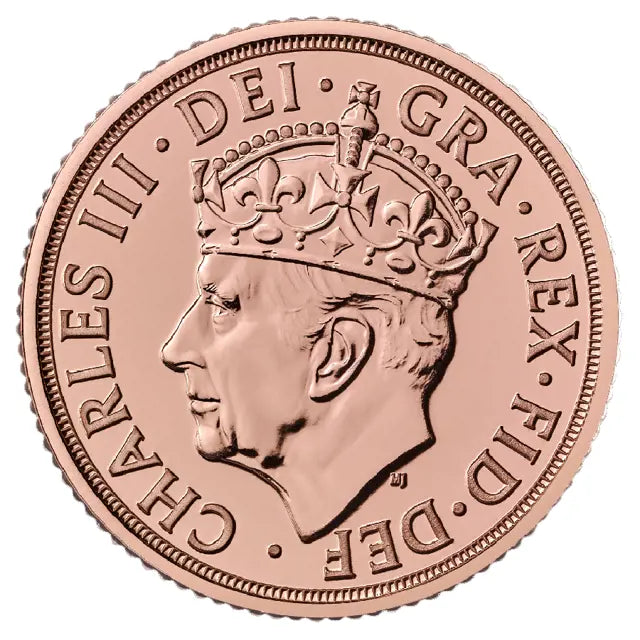
The Precious Metals Week in Review 04/03/2024
Here are your Short-Term Support and Resistance Levels for the upcoming week.
Gold Silver
Support 2017/1999/1987 22.50/22.07/21.59
Resistance 2100/2125/2150 23.41/23.89/24.33
Platinum Palladium
Support 878/868/850 949/928/903
Resistance 910/919/930 996/1022/1043
1. People invest in gold for many different reasons. Many do so out of concern over economic, monetary, or political uncertainty. Others seek a hedge against inflation, a way to protect and preserve the real purchasing power of their savings. There are also those who simply seek some peace of mind, a dependable insurance asset, so that no matter what the future holds and no matter how bad the “worst case scenario” turns out to be, they would still have a solid “Plan B”. All these are valid, sound, and sensible reasons to invest in gold; at least for long-term investors, for those who understand the true value and the core purpose of physical precious metals. Yet ultimately, all these concerns share a common denominator. They all emanate from the same, very well founded and clearly troubling realization that our entire socio-political, economic, and monetary system is merely a mirage - it is a house of cards, supported and backed by nothing but blind faith. It is also designed to favour and reward recklessness, opportunism, improvidence, and sheer greed and to punish and penalize prudence, restraint, patience, and personal responsibility.
2. U.S. stock futures took a breather on Monday after closing out a dizzying week at record highs, as investors braced for a looming inflation update that could put that rally to the test. New inflation data in the coming days will test the staying power of the breakout rally that followed Nvidia's results. A hotter-than-expected CPI (Consumer Price Index) report spooked the market and sparked a stock sell-off earlier in February, and investors are already weighing the chances of a surprise in Thursday's PCE index reading. Given the PCE index is the Federal Reserve's preferred inflation gauge, the reading will factor into the ongoing debate on the timing of a rate cut, already pushed back. The inflation report is the highlight of this week's data, with temperature checks on the consumer and manufacturing also on deck. What they say about the health of the economy may determine whether the bullish mood in stocks continues.
3. Americans are holding on to their homes twice as long as they did 20 years ago, with older generations finding fewer motivations to sell and move. The average homeowner has spent just short of 12 years in their home, up from 6-½ years two decades ago, according to real estate brokerage Redfin. While the time homeowners stay put has fallen from the 2020 peak of almost 14 years, many incentives motivating people to move have since flattened. Other economic indicators suggest as much: US existing home sales hit a 30-year low last year, according to the National Association of Realtors, as homeowners remained locked in by their lower mortgage rates. The trend was most prevalent among baby boomers, many of whom are retiring as both rates and home prices remain elevated. The lock-in effect is geographically widespread, with just a handful of affordable metros seeing homes change hands after barely seven years. Overall, nearly 80% of baby boomers and 72% of Gen Xers own their home, compared to 55% of millennials and 26% of Gen Zers. That imbalance means younger generations trying to break into the market find virtually no inventory of existing homes at affordable prices.
4. Oil fluctuated on Monday as traders await fresh clues about global supply and demand balances. Brent traded above $81 a barrel after shedding more than 2% last week, with West Texas Intermediate near $76. In wider markets, the gauge of the U.S. currency was steady, while most other commodities including copper were weaker. Oil has traded in a narrow band for the past two weeks, with tensions in the Middle East and OPEC+ supply curbs offsetting the impact of higher production from outside the group, including the U.S. “Oil prices should stay anchored near term” amid “substantial non-OPEC+ supply growth over the next few years,” Francisco Blanch, commodity strategist at Bank of America said in a report. The cartel and its allies including Russia are widely expected to prolong their current cutbacks into the next quarter at their meeting early next month. There are some positive signals on demand. In China, a boom in travel during the Lunar New Year holidays has raised hopes of a more sustained recovery in consumption. Local refiners have been snapping up cargoes from across the world since the mid-February holiday, according to traders, as well as having increased term supplies from Saudi Arabia for March.
5. The gloomy mood of U.S. consumers amid a surprisingly strong economy has befuddled many economists. By many measures, the economy is booming. Unemployment is historically low, and the number of jobs has increased every month since December 2020. On top of that, the inflation rate is cooling, and the economy is growing faster in the U.S. than in most other large countries. Yet consumer sentiment remains well below pre-pandemic levels. The cost of money also shapes consumer sentiment through the use of credit cards and other forms of financing. Consumers have become more reliant on credit cards for purchases since the pandemic. Many have felt the sting as unpaid balances mount. The cost to finance that debt is a considerable factor in many consumers’ cost of living. The inclusion of borrowing costs into an alternative measure of CPI inflation significantly narrows the gap between predicted and actual consumer sentiment. The latest bout of inflation may force policymakers to reassess the relationship between interest rates, inflation, and sentiment.
6. Cryptocurrency exchange Gemini - run by billionaire twins Cameron and Tyler Winklevoss will return at least $1.1 billion to customers of its defunct lending program and pay a fine of $37 million for unsafe and unsound practices. The fund is part of a settlement with the New York Department of Financial Services, the regulator said on Wednesday, while a separate lawsuit from New York Attorney General Letitia James still rages on. Gemini's Earn program, which was offered in partnership with crypto lender Genesis Global Capital, was halted during a crypto market crash in November 2022. That dislocation caused Genesis to file for bankruptcy and has led to extensive litigation against Genesis, Gemini and its parent company, Digital Currency Group. NYDFS claimed that Gemini failed to monitor and conduct due diligence on Genesis throughout the life of the Earn program and failed to maintain adequate reserves. “Gemini failed to conduct due diligence on an unregulated third party, later accused of massive fraud, harming Earn customers who were suddenly unable to access their assets after Genesis Global Capital experienced a financial meltdown,” said NYDFS Superintendent Adrienne Harris in a statement. “Today´s settlement is a win for Earn customers, who have a right to the assets they entrusted to Gemini.” The agreement with the New York Department of Financial Services means Gemini's Earn customers, who have not been able to access the funds held in those accounts since late 2022, are one step closer to regaining access to their money.
7. In the week ending February 24, the advance figure for seasonally adjusted initial claims was 215,000, an increase of 13,000 from the previous week's revised level. The previous week's level was revised up by 1,000 from 201,000 to 202,000. The 4-week moving average was 212,500, a decrease of 3,000 from the previous week's revised average. The previous week's average was revised up by 250 from 215,250 to 215,500.
8. The WTI crude oil market rallied significantly during the week as it looks like we continue to see a case made for an eventual breakout with the $80 level firmly in trader sites. Trading as of Friday was $80.15 per barrel. Brent, very much similar trading at the moment, the $84.50 level I believe ends up being a major resistance barrier that once broken could free a lot of chasing.
9. EUR/USD continues to fluctuate in its daily range above 1.0800 in the American session on Friday. The data from the US showed that ISM Manufacturing PMI declined more than expected in February, making it difficult for the US Dollar to gather strength.
10. The Japanese Yen drifts lower on Friday and moves away from over a two-week high. The BOJ policy uncertainty and the risk-on environment undermine the safe-haven JPY. Hawkish Fed expectations underpin the USD and remain supportive of the momentum.
Consumer confidence took a step back in February. The Conference Board's Index for February registered its first decline since November, reflecting persistent uncertainty about the U.S. economy. The index registered a reading of 106.7 in February, down from a revised level of 110.9 in January. January's preliminary reading came in at 114, a two-year high for the measure. Economists surveyed had expected a reading of 115 for February. The Expectations Index, which measures consumers' short-term outlook for income, business, and labour market conditions, fell to 79.8 in February from a revised 81.5 in January. Historically, a reading below 80 in that category signals a recession in the coming year. The drop in confidence was broad-based, affecting all income groups except households earning less than $15,000 and those earning more than $125,000. Confidence deteriorated for consumers under the age of 35 and those 55 and over, whereas it improved slightly for those aged 35 to 54. January's Consumer Price Index (CPI) and Producer Price Index reports earlier this month showed prices increased more than expected in the year's first month and sparked fears that inflation may be stickier than initially forecast. The January retail sales report was also disappointing, as consumer spending slipped more than expected.
After the Federal Reserve started lifting interest rates in March 2022, mortgage rates followed suit - and home sales have faltered since. So how low far would mortgage rates have to come back down to set property markets in motion and get Americans spending on homes again? A majority of prospective home buyers say they would finally follow through with the purchase of a home if rates dipped below 5 percent, according to a new survey by Realtor.com. But aspiring homebuyers may be waiting a while before benchmark rates finally dip below 5 percent. Mortgage rates have hovered above 7% every day for the last two weeks. The average rate for a 30-year mortgage reached 7.16% on two separate days over the last week and settled at 7.1% on Thursday, according to Mortgage News Daily tracking. The latest average is the highest since November. A different index following the weekly average 30-year loan rate showed mortgages increased to 6.94% from
6.90% a week prior, according to Freddie Mac. Rates rose for the fourth consecutive week based on this weekly tracking. While the Fed has indicated it will lower interest rates this year, analysts expect the current rate of between 5.25 and 5 percent will not be cut before May at the earliest. According to the CME Fed Watch Tool, which uses Fed Fund futures prices to gauge the probability of a rate hike, benchmark rates are expected to drop by just 0.75 percent by the end of the year.
Volatility should be expected to remain high as investors will be closely watching for hints on upcoming monetary policy direction. Many investors have redoubled their efforts to ensure that their portfolios are sufficiently diversified in the hopes that they will be able to withstand corrections in multiple market sectors. Many of these investors have included physical precious metals as part of their diversification plans, given their long history as a hedge against both inflation and during times of economic turmoil. Remember, the key to profitability through the ownership of physical precious metals is to own the physical product and hold it for the long term. Always remember that you should never overextend your ability to maintain ownership of your precious metals over the long run.
Trading Department – GCILBullion.
This is not a solicitation to purchase or sell.




Leave a comment
This site is protected by reCAPTCHA and the Google Privacy Policy and Terms of Service apply.